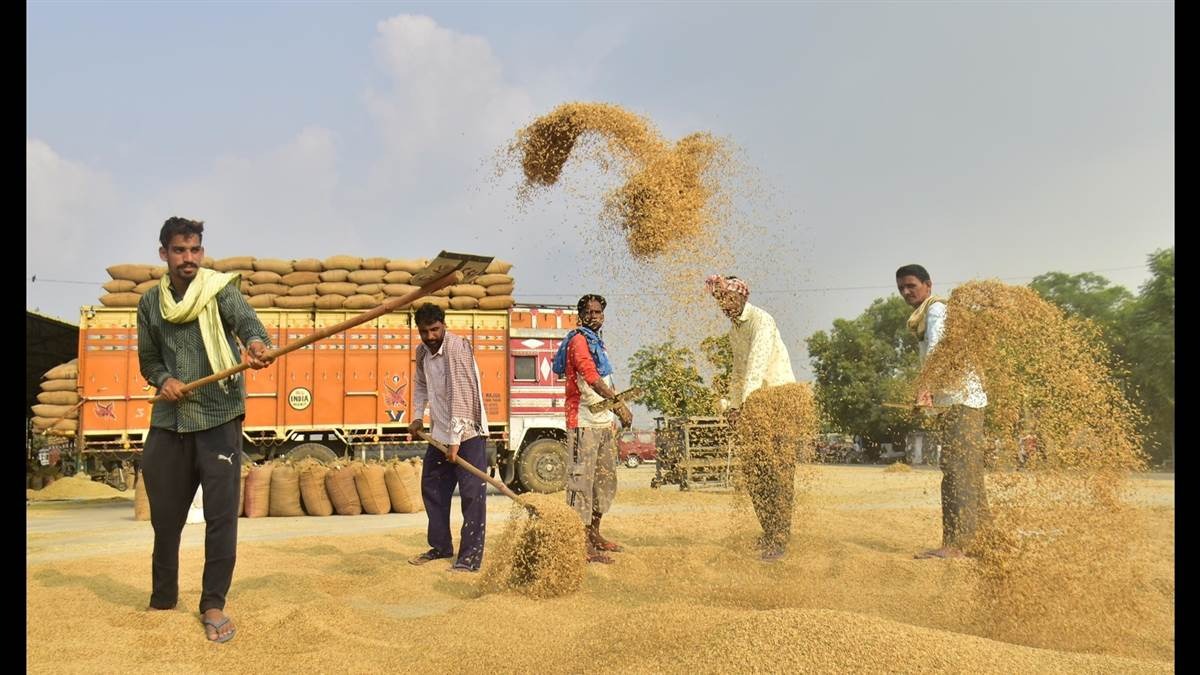With only 1.53 per cent of the country's geographical area, the state of Punjab contributes 21.6 per cent of the country's food stock under paddy (year 2023). The total area under paddy in Punjab is 32.43 lakh hectares with the estimated production during monsoon season 2024. The area of Basmati is 208.89 lakh tonnes and the area is 6.8 lakh hectares. It is every farmer's dream to get high price from paddy crop after months of hard work which depends on successful marketing. Since the time of paddy marketing is going on, farmers need to be aware. come on! Let us share some points, tips and criteria that will help in successful marketing of the crop. Punjab Government has fixed the Minimum Support Price for “A Grade” of paddy at Rs 2320/- per quintal and for ‘Ordinary Grade’ at Rs 2300/- per quintal for the Kharif season 2024-25, an increase of Rs 117. Is. over the last year. The procurement process in the mandis will start from October 1, 2024. Punjab Government has set a target of procurement of 182.00 lakh metric tonnes to various procurement agencies during the season.
some important tips
For smooth marketing, it is mandatory to first register on the food grain procurement portal. According to the new rules, paddy crop has to be purchased on the basis of land area, for this, farmer ID has to be created by mapping the land through Aarti on “Artia Land Mapping Portal”. A link should be established so that the benefits of the crop can be availed as per the area. To avail the benefits of government schemes, farmers will have to register on these portals. If a farmer wants to get his land registered or updated, then this work should be done before selling his commodity in the market, because it is not possible to get these details correct after the crop is sold. J-Form and direct payment for the goods will be received through this portal.
quality standard
Ensure compliance with prescribed quality standards to achieve higher commercial value of the commodity. For minimum support price purchase of paddy, the commodity should be classified at its own level as per the criteria set by the government. The material should be completely dry, clean, uniform in color and grain size, free from odor, mold, and insects. According to the prescribed standards, the material contains inorganic impurities (1 percent), organic impurities (1 percent), broken and shriveled grains (3 percent), damaged, discolored insect-eaten grains (5 percent), moisture content (5 percent). Should not exceed. 17 percent).
Tips for successful marketing
To take advantage of the decision to purchase paddy at the support price set by the government, take clean, dry and properly graded commodity to the market. The government has given instructions to complete the bidding for each lot in the market on the same day from 11:30 am to 4:00 pm and to ensure that the weighing is done on the same day after the bidding. The reasons for non-sale of goods are lack of cleanliness, excess moisture and non-conformity to the prescribed standards. Therefore, by keeping these things in mind beforehand, unnecessary delays and problems in selling can be avoided. Care should be taken to be present at the time of bidding, weigh the item properly, use certified hooks, uniform level of hooks on the ground etc. To protect farmers from robbery during the season, officials of the Mandi Board and the Marketing Section of the Agriculture Department also regularly check the hooks and weights in each mandi. The procurement of paddy has been fixed at 37.5 kg per bag.
labor cost
Farmers will have to pay only Rs 2.45/unit for unloading and Rs 4.34/unit for cleaning through machine. The remaining stuffing, weighing, stitching and loading costs will be borne by the purchasing agency/buyer. To avoid unnecessary damage to the product, machine cleaning (powered by electricity) should be done only once and manual cleaning should not be done more than twice. For successful marketing, control rooms have been established at Mandi Board level, District level and State level. Therefore carry the paddy produce clean, dry, moisture free, uniform quality, free from impurities so that marketing is easy, smooth, timely, efficient and high value. ,
Tips for harvesting crops
Producers should pay special attention to the quality of the product for timely and easy marketing. It is important to understand the factors affecting quality (seed quality, time of sowing, amount of fertilizers, amount of water, health of soil, time of harvest). Now that the harvesting time is near, it is important for farmers to know that early and late harvesting affects the quality of the crop. It should be ensured that at the time of harvesting the grains are uniformly dry from bottom to top, the moisture content should not exceed 17 percent, the period from emergence to harvesting is at least 35 days, the color of the leaves should turn brown before time. During harvesting, there is a risk of rawness, breakage, excess moisture and diseases in the grains. Delay in harvesting may increase the risk of damage from rodents, birds, insects due to breakage and scattering of seeds. In dry weather, harvesting should not be done early in the morning or late in the evening, this can increase the moisture content in the grains.
 look news india
look news india

